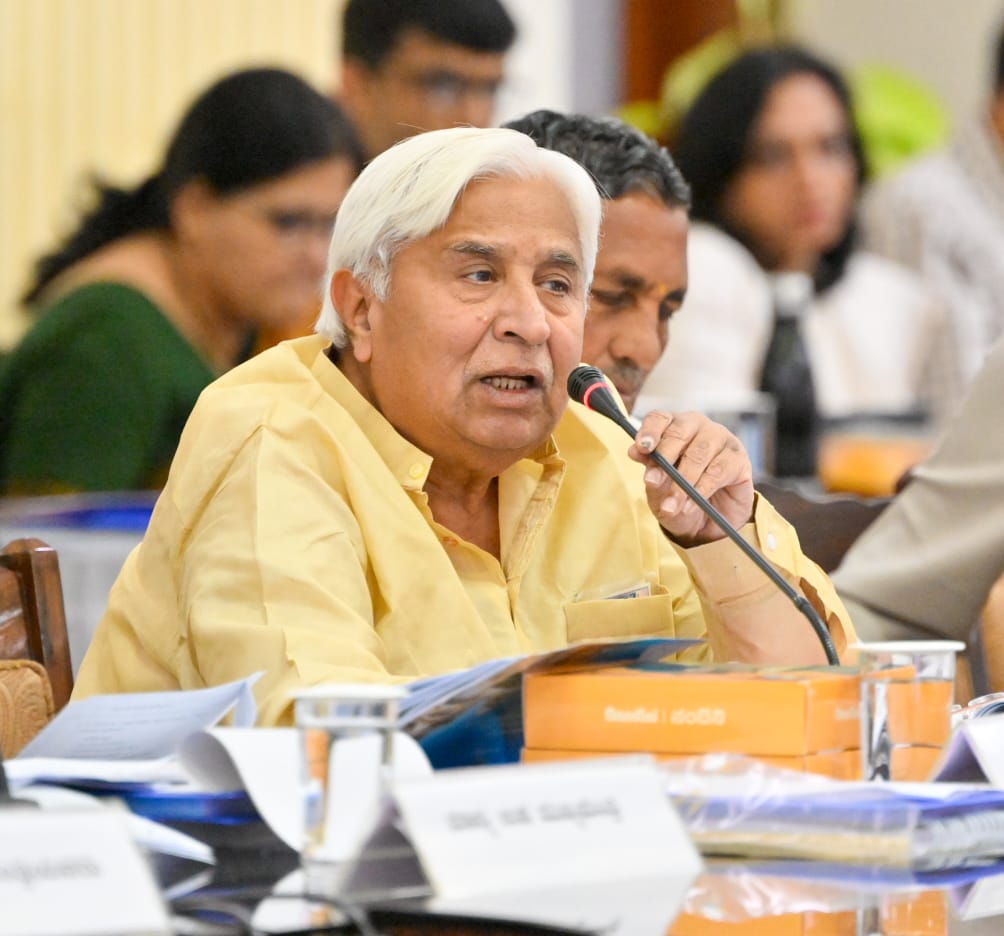Landowners with notified minerals on their properties will now be required to pay a tax to the government.
Published Dec 06, 2024 | 9:39 PM ⚊ Updated Dec 06, 2024 | 9:39 PM

Karnataka Minister for Law and Parliamentary Affairs and Tourism HK Patil.
In a move to enhance revenue collection and strengthen regulations in Karnataka’s mining sector, the state Cabinet has approved an increase in the royalty for building and mining stones, besides launching a One-Time Settlement Scheme to recover pending penalties from mining companies, and levy tax on owners of mineral-bearing land.
The per metric tonne royalty will rise from ₹70 to ₹80, generating an estimated ₹311.55 crore annually. It is expected to increase the retail price.
The government is also introducing a one-time settlement (OTS) scheme to recover ₹6,105 crore to facilitate the recovery of pending penalties from the miners. This move would help streamline the collection of pending fines, which currently amount to ₹6,105 crore.
Additionally, the use of a Differential Global Positioning System (DGPS) has ensured more accurate monitoring of mining activities, reducing encroachments and violations.
Minister for Law and Parliamentary Affairs HK Patil reiterated the government’s commitment to addressing the state’s revenue shortfall and ensuring compliance in the mining industry.
The Siddaramaiah-led Cabinet approving the royalty price per metric tonne of building and mining stone by ₹10 is expected to spike the retail price.
#Karnataka: The @siddaramaiah cabinet gives a nod to increase the royalty price per metric ton of building and mining stone by Rs 10, which is expected to further rise in retail price.
In a significant development, Minister for Law @HKPatilINC announced that the cabinet has… pic.twitter.com/sbDHG1E73c
— South First (@TheSouthfirst) December 6, 2024
Minister Patil said the Cabinet approving amendments to the Karnataka Minor Mineral Concession rules would pave the way for stricter regulations and enhanced revenue collection.
“Key measures include revising royalties for building stones and mining stones. The government has decided to increase the royalty per metric tonne to ₹80. The earlier royalty fee was ₹70 per metric tonne,” Patil told reporters after the Cabinet meeting on Friday, 6 December.
“This move is expected to generate an additional revenue of ₹311.55 crore annually. This aims to address the revenue deficit and optimize the state’s resources,” added Patil.
The OTS scheme is aimed at addressing revenue losses and enforcing accountability in the mining sector. The Cabinet expects to ₹6,105 crore in unpaid fines and royalties through the scheme.
“There were instances of unauthorised mineral transportation without royalty payments by mining companies. To address this, a penalty of ₹6,105 per tonne has been levied,” Patil said.
“However, these penalties have remained uncollected for several years, with some contractors defaulting for as long as six to seven years. In light of these issues, the government has proposed a one-time settlement scheme to facilitate the recovery of dues,” he added.
The minister emphasised that the decision would help streamline the collection of pending fines from 2,438 erring mining companies.
“The government had earlier estimated ₹1,221 crore in royalties but faced challenges in recovery due to long-standing arrears and administrative lapses. For the past six years, the royalty was not collected because of various objections and differences highlighted by miners,” Patil explained.
The minister claimed that the introduction of the Difference Global Position System (DGPS) was helping to a great extent in ascertaining the irregularities and violations in the mining sector.
“In 11 districts, the Differential Global Position System (DGPS), which uses drones, a survey was conducted on the utilisation of mining area. We did not have an exact scientific estimate about mining in the allocated area,” Patil said.
“After implementing DGPS, we were able to ascertain the area of utilisation in the mining area. This will greatly help in finding violations,” the minister said.
He said instances of encroachment and exploitation have been significantly reduced.
Patil reiterated the government’s commitment to generate revenue from the mining sector. “The One-Time Settlement will provide an avenue to resolve pending disputes, enabling the state to recover substantial amounts owed by mining operators,” the minister stated.
In a move to boost revenue, the Cabinet has approved the introduction of a tax on individuals owning mineral-bearing lands.
With this decision, landowners with notified minerals on their properties will now be required to pay a tax to the government.
“The Cabinet has approved the Karnataka (Mineral Rights) Tax Act. Different tax rates are proposed based on the category of mines, taking into account the current additional payments by miners,” Patil said.
“However, a uniform tax rate is suggested for mining leases within the same category. This tax will apply to lands containing notified minerals such as copper, bauxite, iron ore, and chromite,” he elaborated.
“Landowners will need to pay ₹100 for mining one tonne of mineral from their lands. This tax applies to all minerals being mined and is separate from the royalty paid by the miners or mining companies,” Patil clarified.
“This initiative will not only provide additional revenue to the government but also grant mineral rights to the landowners. It introduces a new tax system, which would be tabled in the upcoming legislative session,” Patil said, adding that the estimated revenue impact would be determined once the law was enacted.
(Edited by Majnu Babu).
